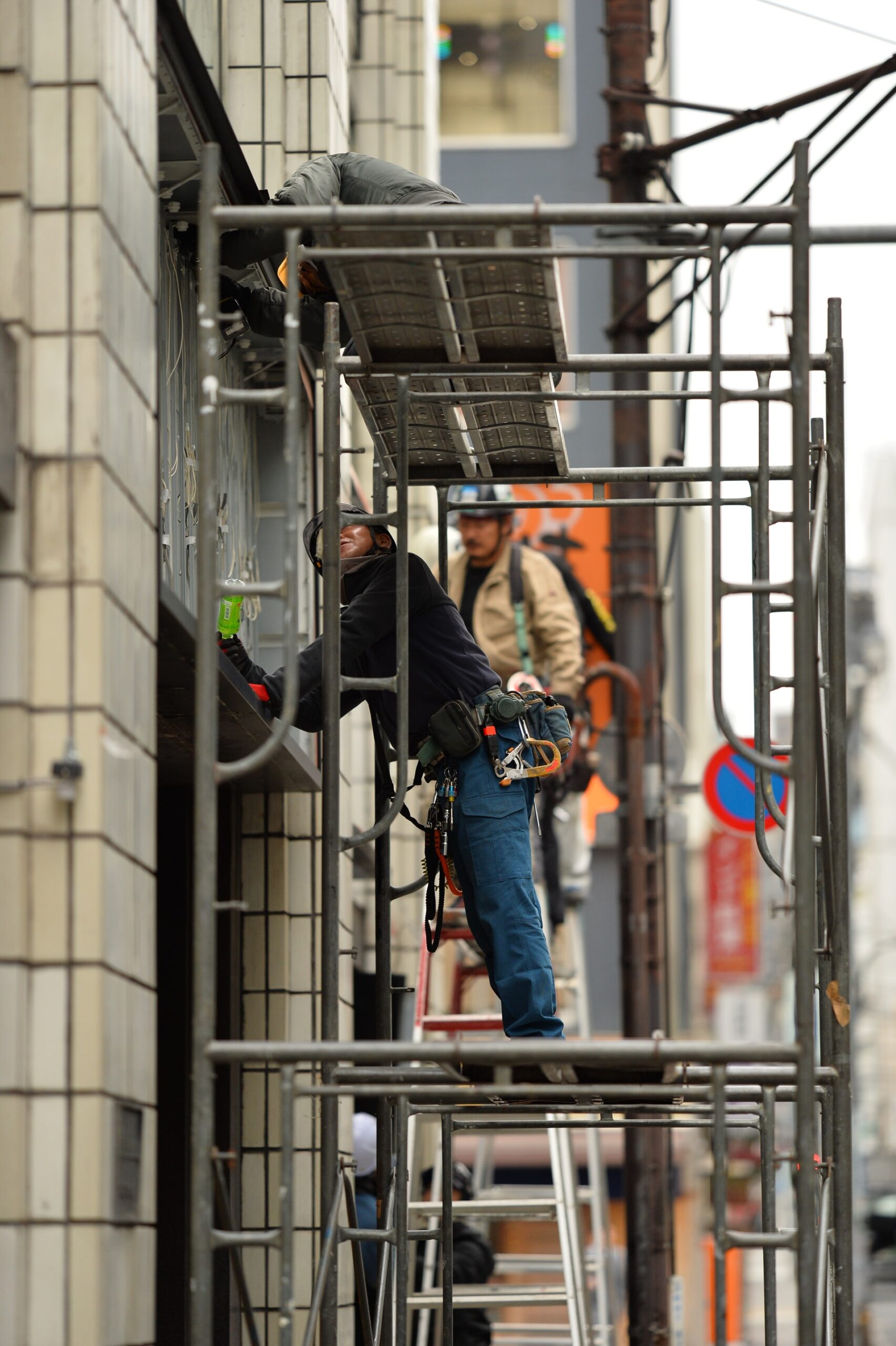Working on raised scaffolding must be taken seriously, as it can prove dangerous or even deadly if proper safety precautions are not followed. However, if safety protocols and practices are adhered to, these structures can be just as safe as working any other elevated construction method. Let’s have a look at some of the most important scaffolding safety tips.
Get the Right Training
New safety regulations mandate that all workers who will be working on or near scaffolding be properly trained on scaffolding construction and safe usage. This includes how to get on and off the scaffolding safely, how to prevent falls, and how to respond to emergency situations while on the scaffolding. This type of training is necessary to keep not only yourself, but the everyone else on and below the scaffolding secure and safe.
Inspect Regularly
Always inspect scaffolding thoroughly at the beginning of the day, after breaks, and at the end of the day. Check to see that the base is secured, and that it is level and adjusted for any lean in the building. Make sure that every single guardrail and plank is installed or fitted safely and securely. Look for elevation changes and obstructions (such as wires), and check weather conditions.
Understanding Load Capacity
During the design stage of scaffolding, a common and dangerous mistake is failing to consider the full load the structure will be required to carry. For safety’s sake, do not add workers beyond the scaffold’s rated capacity. Also, watch that equipment does not overload the structure, and ensure that nothing is pushing against any guardrails.
Secure the Platform
Scaffolding is designed to be braced by, or entirely attached to, a building. If bracing is not adequately secured, scaffold movement may dislodge an end, which will reduce the stability of the scaffold. There are several types of scaffolding brace retention or locking systems. These systems need to operate freely during assembly and dismantling, and must also secure or lock to prevent the brace from dislodging. Never replace the brace parts supplied by the manufacturer with nails or other miscellaneous substitutions.
Take Advantage of Guardrails
A construction company must assure that any scaffolding over 10 feet high has guardrails on the three sides facing away from the building at minimum, and it is recommended that guardrails be installed on the building side as well. Guardrails are not a substitute for proper fall protection gear, which should be worn at all times while on the scaffolding.
Inspect It
Scaffolding structures must be constantly inspected and maintained to ensure their structural integrity and safety. An experienced inspector will check to see that all boards are intact, and that all components are safety compliant. Failure to keep these crucial components regularly maintained could lead to extremely hazardous conditions.
Keep Things Organized
Scaffolding structures are notoriously cramped, so it is essential to keep tools organized and out of the way. Remember to keep all walkways free of obstructions and trash that might cause a fall.
Balance Yourself
Scaffolding must be perfectly level to minimize the fall risk. Still, stay alert when on a scaffold, and always watch your balance to avoid falls and serious injury.
Use Protection, or PPE
PPE (personal protective equipment) such as head protection, fall prevention gear, and non-slip footwear should be worn at all times to minimize the risk of injury to yourself, your co-workers, and others in your immediate area.

